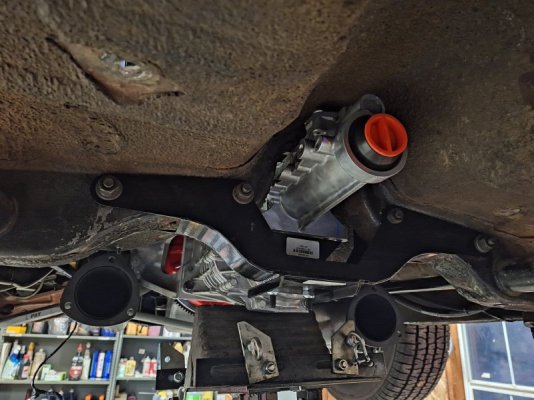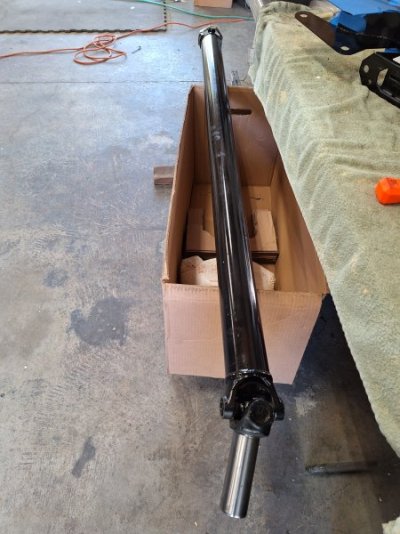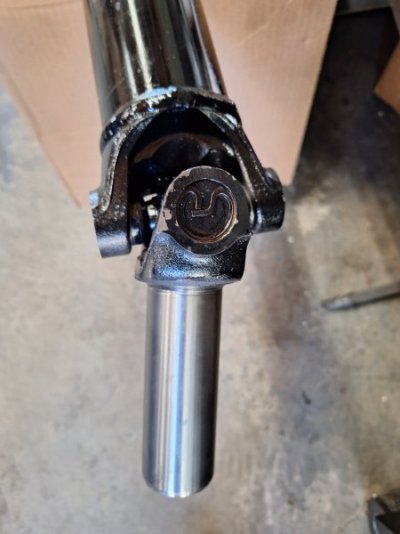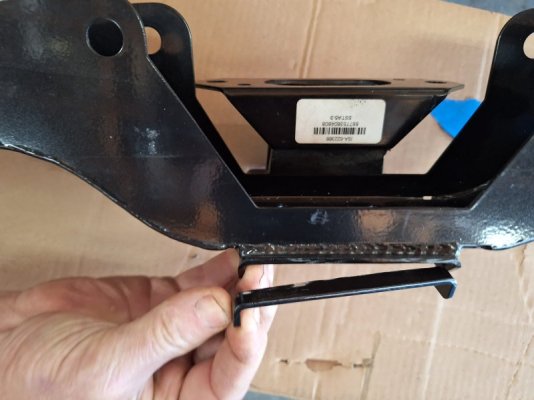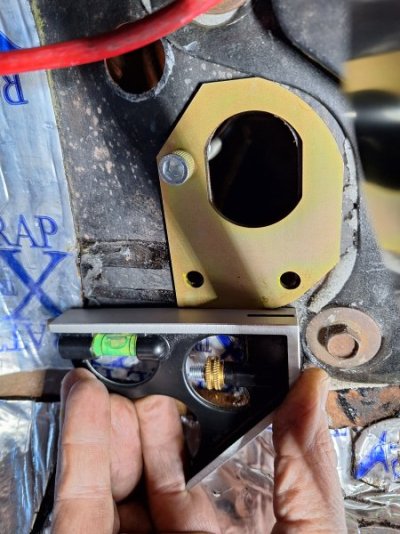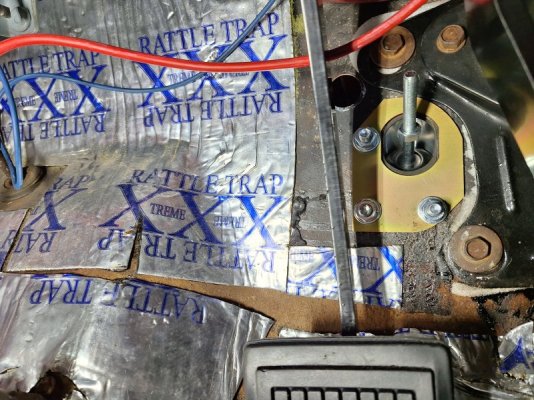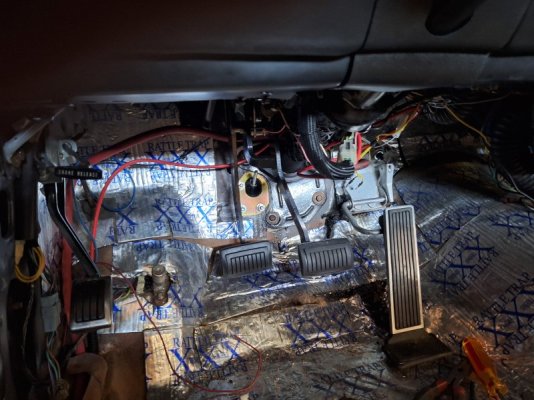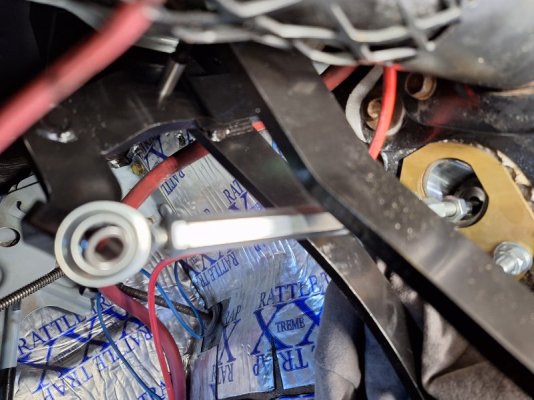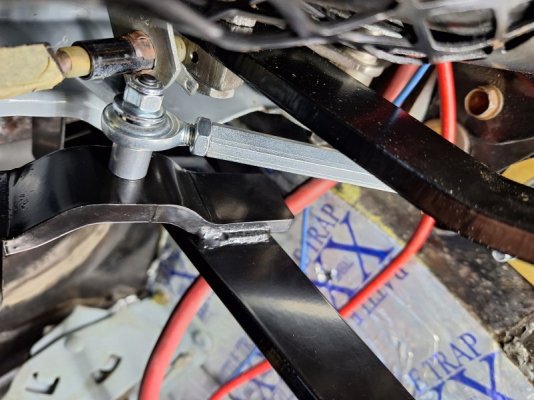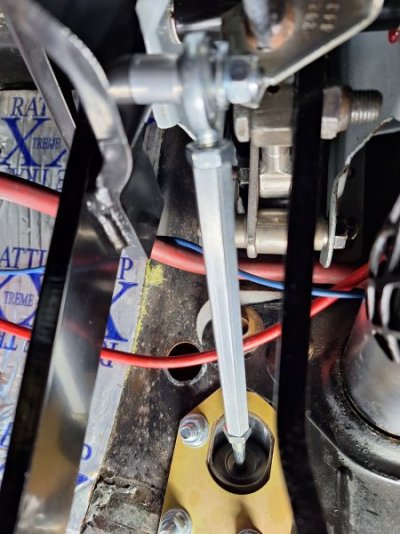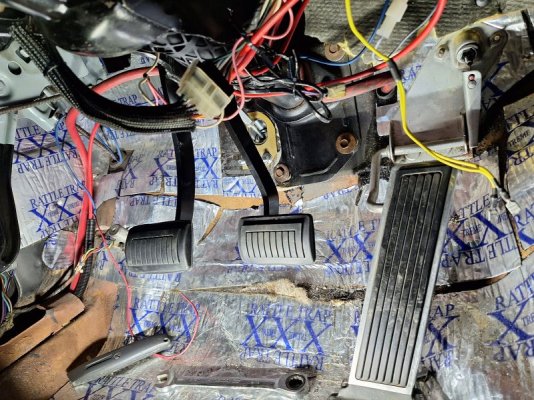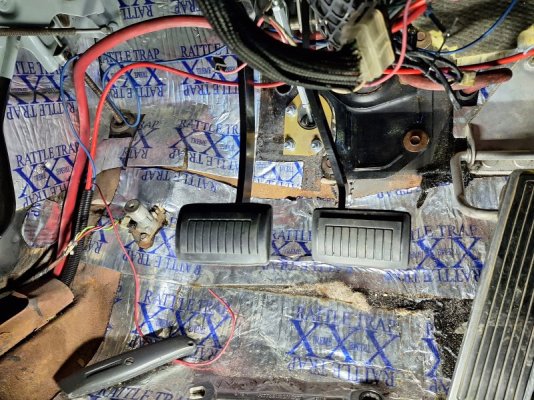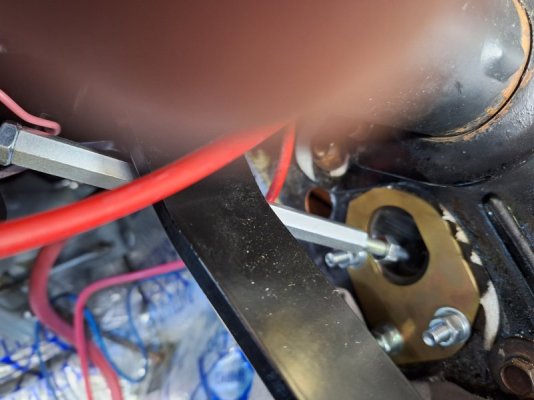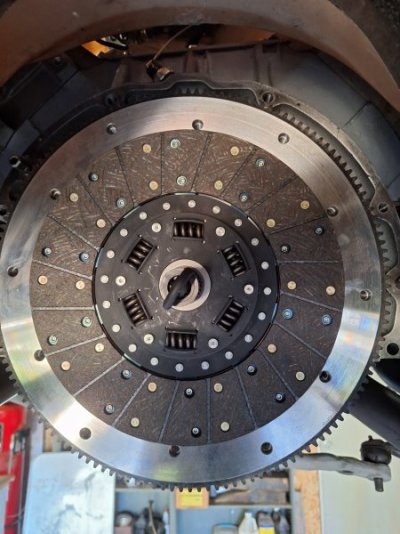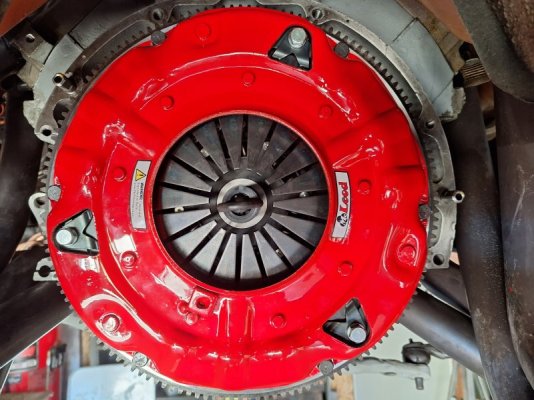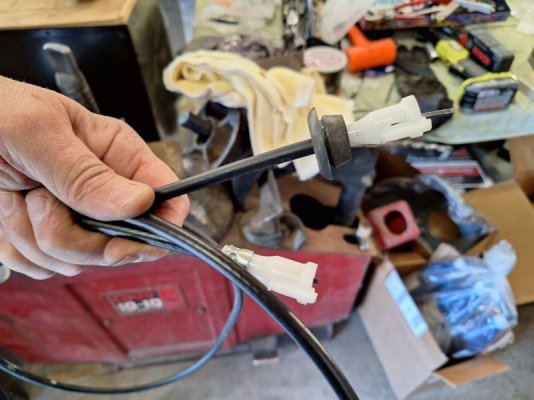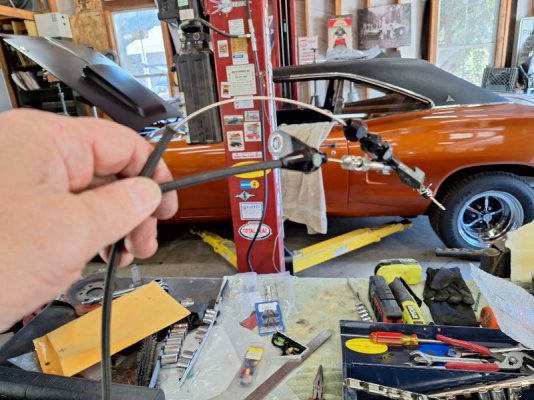We spent most of the day in the garage and got a lot accomplished, and I'll backfill the details. But first I'll cut to the chase: the TKX is in! It took a lot of finagling over about a two hour period to wrestle it home. With the tapered spline shaft its less forgiving than the old 833's.
We had the tranny in once before (without the clutch disc and pressure plate) to measure the driveshaft, so we knew we had the space to mate it to the BH face. Before rolling the trans under the car, Greg smeared some of his assembly lube on the spline shaft and the outside of the slave cylinder collar to help glide it in. The initial jockeying of the trans jack was fairly repetitive; it was a series of raising and tilting the jack while rolling it backwards to get the tail shaft to clear the H pipe. Once the H pipe was cleared we could roll the jack back enough for the spline shaft to clear the BH, and at that point we rolled the jack forward and was able to push the tranny in all the way to the slave cylinder collar. The bullnose of the spline shaft was past the clutch disc and into the pilot bearing, although it was impossible to see or gauge how far.
We got the trans to within a 1/2" of the BH before running out of steam. No matter how much we pushed and twisted the trans it wouldn't go in any further.
After struggling for about an hour, we decided it was time to ignore the SST instructions and use the power of torque to pull the tranny in. Greg had extra long GH bolts that we ran through the tranny mount holes and engaged the BH, tightening until we felt resistance. Then with Greg and I on opposite sides of the tranny, we methodically in a cross-bolt pattern, started drawing the trans to the BH one bolt at a time. It didn't take long before the trans mated to the BH. Full disclosure, the SST instructions warn in BOLD, ALL CAPS TYPE, not to do this for risk of breaking off a ear.
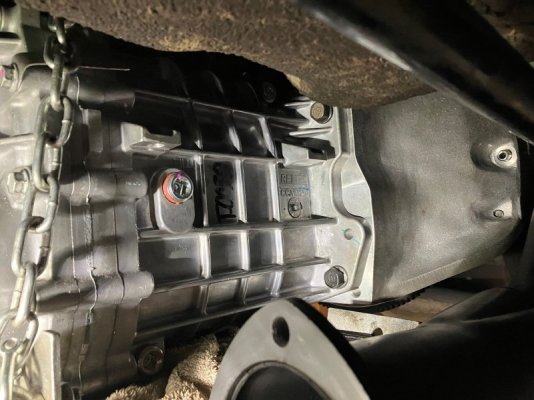
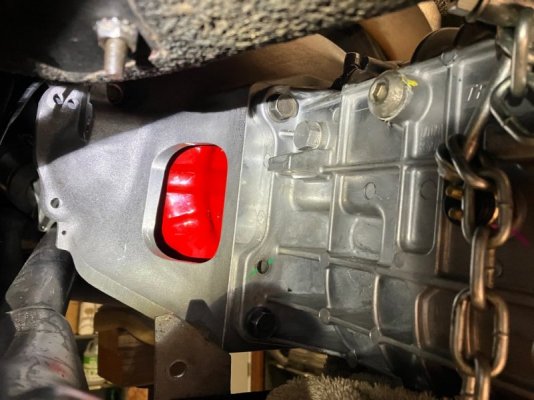
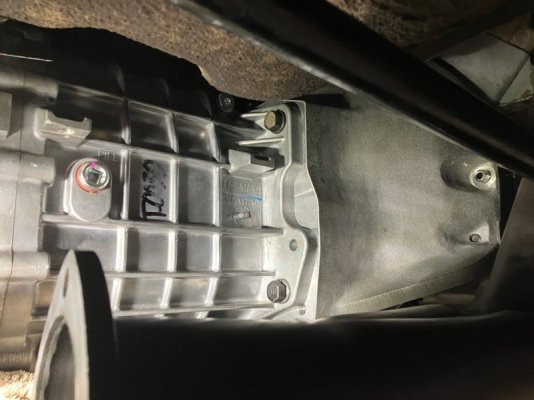
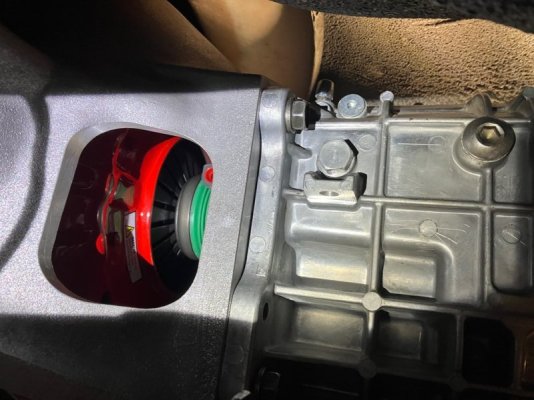
We had to use a rubber chock on the jack to gain enough height to line up the tranny to the BH and gain enough room to slip in the cross member.
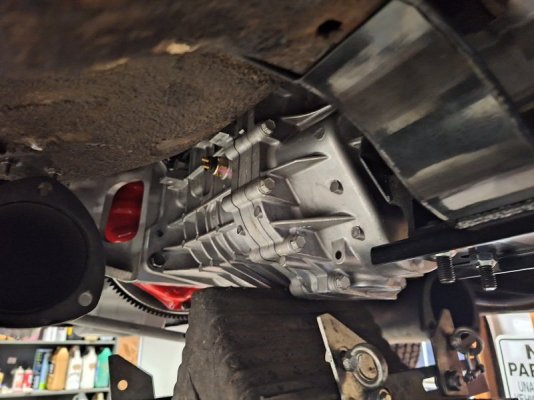
Raising the tail shaft, we were able to start one of the outside bolts. The tranny still requires some jockeying and twisting to line up the other three bolts.
